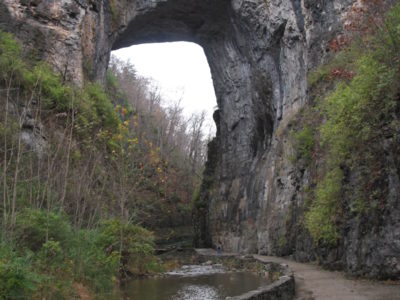 Saturday being the Fourth of July, it seems appropriate to think about how the author of the Declaration of Independence felt about nature. A revealing example involves some land Jefferson owned between Lexington and Roanoke, which he sought to preserve. Two years before the Declaration of Independence, Jefferson purchased 157 acres of land from the …
Saturday being the Fourth of July, it seems appropriate to think about how the author of the Declaration of Independence felt about nature. A revealing example involves some land Jefferson owned between Lexington and Roanoke, which he sought to preserve. Two years before the Declaration of Independence, Jefferson purchased 157 acres of land from the …
Continue reading "Jefferson’s Bridge"
The post Jefferson’s Bridge appeared first on Legal Planet.
#fourthofjuly #land
Saturday being the Fourth of July, it seems appropriate to think about how the author of the Declaration of Independence felt about nature. A revealing example involves some land Jefferson owned between Lexington and Roanoke, which he sought to preserve.
Two years before the Declaration of Independence, Jefferson purchased 157 acres of land from the King. He bought the land because it contained a remarkable feature — a 200-foot natural bridge carved out of the rock by a small stream. Jefferson had first seen the bridge seven years earlier when he was doing research for his book, Notes on the State of Virginia. A small cabin was built there, and the visitors book contains such names as Marshall, Monroe, Clay, Benton, Jackson, Van Buren, and Sam Houston.
Jefferson described the bridge at length in his book on Virginia, where he called it “the most sublime of Nature’s works.” In terms of the experience of seeing the bridge, he had this to say:
“Though the sides of this bridge are provided in some parts with a parapet of fixed rocks, yet few men have resolution to walk to them and look over into the abyss. You involuntarily fall on your hands and feet, creep to the parapet and peep over it. Looking down from this height about a minute, gave me a violent head ach[e]. If the view from the top be painful and intolerable, that from below is delightful in an equal extreme. It is impossible for the emotions arising from the sublime, to be felt beyond what they are here: so beautiful an arch, so elevated, so light, and springing as it were up to heaven, the rapture of the spectator is really indescribable!”
At one point, in desperate financial straits, Jefferson tried to sell the land, but he later thought better of the idea. In an 1815 letter, Jefferson wrote that he now had “no idea of selling the land. I view it in some degree as a public trust, and would on no consideration permit the bridge to be injured, defaced or masked from public view.” This is a noteworthy early appearance of the idea of that we hold nature in trust for the public, not for private gain.
In 1998, the bridge was designated as a National Historic Landmark. In 2014, owners reached a complicated agreement with a land trust with the aim of ultimately converting it into a state park. Today, the land is Natural Bridge State Park, about a two-hour drive from Richmond. The 1500 acre park also contains forest, meadows, and hiking trails. Hopefully, visitors to the park will avoid Jefferson’s violent headache and instead share his experience of the sublime.
This is an updated and revised version of a post from July 4, 2016. In the intervening time, after some financial difficulties, the land containing the bridge has become a state park.
The post Jefferson’s Bridge appeared first on Legal Planet.
By: Dan Farber
Title: Jefferson’s Bridge
Sourced From: legal-planet.org/2020/07/02/jeffersons-bridge/
Published Date: Thu, 02 Jul 2020 14:52:34 +0000
Vist Maida on Social Me
Website Links
Maida Law Firm - Auto Accident Attorneys of Houston, by fuseology

No comments:
Post a Comment